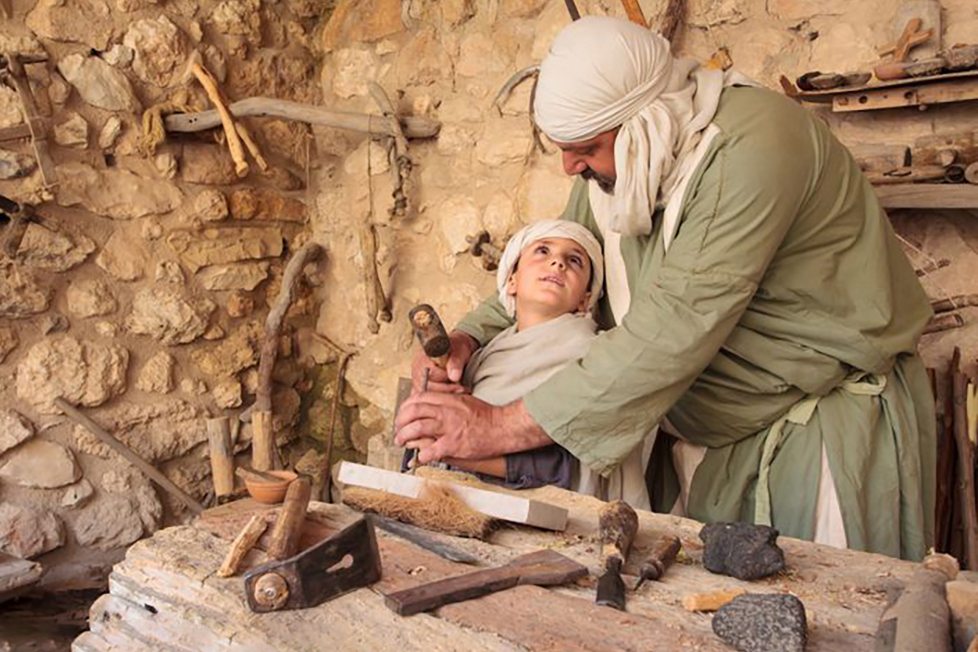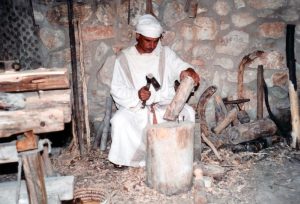
For the feast of St Joseph the Worker (1 May), Mary Cresp rsj shares about the work and life of St Joseph which has been adapted from her book, In the Spirit of Joseph, 2005 (North Sydney, Sisters of Saint Joseph of the Sacred Heart) pp. 94-96.
Joseph, we are told, was a tekton – a person who works with hard substances. Archaeological evidence tells us that the bulk of these substances was most likely stone, since timber was not plentiful and there was ample use of the limestone and basalt deposits in the area. Public works such as water systems in neighbouring Sepphoris and domestic constructions such as grinding stones and storage areas used these materials excavated out of the hills. Ovens were made out of brick. Wood would have been used for ploughs, door frames and small items of furniture. A more accurate description of Joseph’s trade, then, would be ‘builder’ since there was no such thing as a specialised ‘carpenter’.
It is known that builders, often related, worked in groups, travelling around the region. So, it is possible that this was the way Joseph gained his employment. In nearby Sepphoris, where Herod was rebuilding the city according to architectural styles of pagan Rome, Joseph might well have been a hired labourer there, doing heavy construction work without the benefit of machinery, but with the constant threat of physical injury or even death.

Involved in these interactions would have been the system of ‘patron-client relationships’ that would have determined availability and conditions of work. This system, which applied also to social standing, depended on the beneficence of well-disposed males in positions of influence whose ‘patronage’ brought them honour and status. Joseph and those he worked with would have had to cultivate these contacts, giving and receiving hospitality and gifts.
However, Joseph’s work-life involved far more than building and its associated activities. He would also have been a small-time farmer, since craftsman like Joseph would have cultivated a plot of land for basic foodstuffs, including grains, olives for oil and grapes for wine. A kitchen garden would supply legumes, vegetables and fruits. Most families kept a number of small animals, mostly sheep and goats which provided dairy products, occasional meat, and skins and wool for making clothes.
Scholars note that the parables of Jesus all use the imagery of fields, animals and harvesting, and of workers lining up for hire, rather than that of a tradesman working quietly in his ‘carpenter’s shop’. This is one more indication that the experience of Joseph and the growing Jesus would have been just this: the constant, hard work of caring for the home ‘plot’, producing food and tending animals as well as labouring at the building trade.
In Joseph we see one who, in his work, grew into union with God. Gerard Manley Hopkins recognises this in his poem entitled Work:
It is not only prayer that gives glory to God but work.
Smiting on an anvil, sawing a beam, whitewashing a wall,
Driving horses, reaping, scouring – everything gives God
Glory. To lift up hands in prayer gives God glory.
But a man with a dung-fork in his hand,
Or a woman with a slop-pail,
They give God glory too. [1]
Mary Cresp rsj
[1] Gerard Manly Hopkins, Collected Works.
